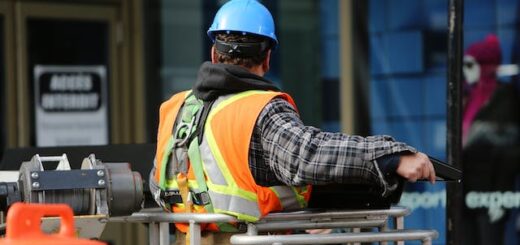Ground Improvement for Low Rise Buildings
Low elevation lands have weak ground conditions usually. Construction of the foundation in such lands for low rise buildings will always be a very difficult task as some improvement of the ground is required as recommended by the geotechnical investigation report. It is always advisable to do geotechnical investigation in those types of land to examine the ground profile and getting a recommendation based on the condition of ground and settlement criteria.
Figure 01: Weak Ground Profile
Ground improvement could proceed as per the recommendation of the geotechnical investigation report. Usually, in low rise buildings, the shallow foundation could be constructed to support the structure. However, there are occasions where the deep foundations such as driven piles (precast) and cast-in-situ, are constructed when the improvement of ground could not be possible.
It is practical to construct the foundation above the water table in low rise buildings as there are an individual or combined footings that make it very difficult to do the dewatering until foundation and columns are constructed above the water table. Therefore, improvement of the ground could be done above the groundwater table.
Mostly, excavating up to a hard soil layer or to where it recommended by soil report and fill with sand or quarry dust is done. There are two methods that can be followed in excavation and ground filling. They are excavation supported by concrete cylinders and excavations done without any support. Figure 02 indicates both types.
Figure 02: Excavation Methods
Unsupported Excavations
When the groud is comparatively stiff and it is not collapsing with the excavation, this type of method can be used. Further, depth of the excavation is limited at there is a risk of collapsing the ground and the works can not work at risk. Further, collapsing of the ground could be possible as shown in Figure 02. There will be an additional cost to fill the excavated volume. Therefore, whether to proceed with supported excavation or not shall be decided wisely.
Supported Excavations
The supported excavation method is more suitable for deep excavations and when the excavation is collapsing due to the poor ground conditions. This method is costly when compared with the other method as there will be an additional cost for the concrete cylinders.
Depending depth of the concrete cylinders will be reinforced. Structural engineers should decide whether to have reinforced cylinders or not. In lower depths, soil pressure is less and unreinforced cylinders could be used. However, at deeper depths, lateral earth pressure will be higher. Further, the thickness of the concrete is also in the range of 50mm -75mm. Therefore, as recommended by the structural engineer, thickness and reinforcement arrangement shall be decided considering the type of soil and depth of excavation.
Firstly, a cylinder is kept at the correct location where the excavation needs to be done. With the excavation, cylinder will be lowered. Then another cylinder will be kept on the top of the cylinder at the excavated pit. The same procedure will be followed until the excavation is completed to insert the cylinders.
Filling Procedure
After the excavation was done as per the geotechnical investigation report, filling of the excavated pit could be done. The material could be sand or quarry dust or as recommended by the geotechnical engineer. The following procedure or recommended method in the soil report could be followed for filling and compacting the pit.
- Remove the water in the excavated pit
- Fill sand or quarry dust layer of 300mm
- Allow the water table to rise and to saturate the fill
- Compact the fill by poker vibrator. Compaction can be done with plate compactor also and it could be done before rising the water table or not allowing to rise the water table by dewatering.
- After compacting another layer of 300mm thick shall be added and to the compaction as mention above
- Repeat the same procedure





